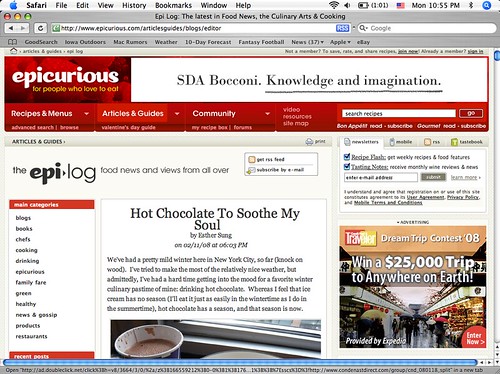 There are a lot of buzz words flying around the alternative agricultural world today ... you know words like: small scale, cottage farmer, sustainable, heritage, natural, organic, and even alternative. As I continue on my journey towards and in farming I find myself using these words from time to time and reading them all of the time. But, it seems like they mean different things to different people. What is natural to some may not be natural to others ... what is alternative to some may be main stream to others ... But, the word the I find myself using the most and that I hear different definitions for is "sustainable". What exactly does it mean in terms of agriculture?
There are a lot of buzz words flying around the alternative agricultural world today ... you know words like: small scale, cottage farmer, sustainable, heritage, natural, organic, and even alternative. As I continue on my journey towards and in farming I find myself using these words from time to time and reading them all of the time. But, it seems like they mean different things to different people. What is natural to some may not be natural to others ... what is alternative to some may be main stream to others ... But, the word the I find myself using the most and that I hear different definitions for is "sustainable". What exactly does it mean in terms of agriculture?Before we go any further I want to throw out my two cents. To me having a sustainable farm means that I have a farm that supports my family emotionally, physically, and financially. I mean that a sustainable farm would be enjoyable to my family not a drain on their happiness or spirits, that it would provide health to my family through the work they do and the food that they eat, and that it would provide a reasonable living for us. My sustainable farm would provide my family with plenty of food for our own table, but we would not become self-reliant in the food sense. Also, I believe a sustainable farm is beneficial to the community ... sometimes that means they purchase goods from us, sometimes it means they enjoy the land, and sometimes it means that we do not harm the area around us.
In a nut shell that is my view of sustainable agriculture ... for me. Of course there are lots of other things that I could add to that, but I think it is a good starting point. Others, I'm sure, would include things about the environment or even the animal welfare. While these are both important to me they are not what my idea of sustainable is based upon ... probably because of the reason that I desire to farm (you can check out THIS POST for more on that).
As I have surfed around various areas of the internet I have often read debates about what exactly is or is not a sustainable farm. There some that would say that your farm is not sustainable unless it does this, that, and this. Others believe that the term is more broad ... I'm probably in that group.
So, what is your definition of sustainable agriculture. Do you have to do certain things to fit into the mold? I would love to hear your thoughts on the subject because I believe the answers will say a lot about why people farm and why people trust certain farms.
If you would like to see how some others define "sustainable agriculture" check out these links:
"What is Sustainable Agriculture?" - University of California
"Introduction to Sustainability - What is Sustainable Agriculture" - Sustainable Table
"Sustainable Agriculture: Definitions and Terms" - USDA
"Sustainable Agriculture" - Wikipedia





























